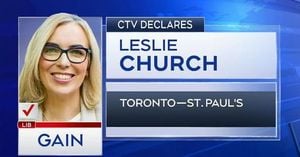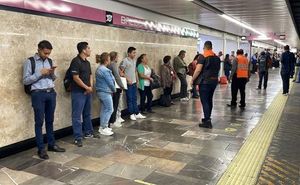New York’s most glamorous and star-studded evening, the Met Gala, is just around the corner, and the anticipation is palpable. Scheduled for May 5, 2025, this year’s gala promises to be particularly significant as it focuses on the extraordinary influence of Black culture on fashion.
This year’s theme, "Superfine: Tailoring Black Style," will celebrate the evolution of Black dandyism and its impact on menswear throughout the centuries. Drawing inspiration from Monica L. Miller’s 2009 book Slaves to Fashion: Black Dandyism and the Styling of Black Diasporic Identity, the gala will explore the rich history and cultural significance of Black style, tracing its roots back to the 18th century and highlighting its resurgence today.
The Met Gala, which is organized by the Metropolitan Museum of Art’s Costume Institute, serves as both a spectacular fundraiser for the museum and as the launchpad for its annual fashion exhibition. Not only does it feature over-the-top red-carpet looks, with celebrities and fashion icons pushing the boundaries of creativity, but it also sheds light on the socio-cultural narratives behind fashion.
Co-chaired this year by icons like musician Pharrell Williams, actor Colman Domingo, Formula One superstar Lewis Hamilton, rapper A$AP Rocky, and honorary chair LeBron James, the gala is set to be led by names unafraid of taking fashion risks. Vogue’s editor Anna Wintour, who has been at the helm of the Met Gala for decades, will also lend her expertise to the event.
Andrew Bolton, the Head Curator of the Costume Institute, along with guest curator Miller, assures this will be one of the first exhibitions to focus mainly on menswear since the early 2000s, offering much-needed representation of Black male style and identity.
The usual exclusive guest list, which historically includes around 450 attendees ranging from A-list celebrities to industry leaders, will see guests likely interpret this year’s theme through sharply-tailored suits, perhaps drawing on styles reflecting the Harlem Renaissance and various influences from African traditions.
Hamilton has vocalized his excitement for the event, sharing how fashion has been integral to his own identity. He emphasized the importance of representation, especially for those from marginalized communities, which resonates strongly with this year’s theme. “I started to express myself more creatively and more through fashion,” Hamilton stated, highlighting how sartorial choices can illuminate one’s identity.
The event’s golden ticket hasn’t lost its price tag — last year, seating at the gala cost around USD 75,000 per dinner plate, contributing to the staggering USD 22 million generated for the museum. With such monetary stakes involved, attendees not only strive to dazzle on the red carpet but also push the envelope on social issues, showcasing diverse voices and experiences.
On social media, the buzz surrounding the upcoming gala has already generated excitement, with attendees and organizers alike expressing their eagerness for May. Lewis Hamilton, after the announcement, posted on social media, "Honored to be one of the co-chairs for next year’s Met Gala, ‘Superfine: Tailoring Black Style.’ See you in May." His enthusiasm echoes the sentiments of many fans and fashion aficionados eagerly awaiting the gala.
Historically, the Met Gala has consistently explored themes of cultural significance and the intertwining of fashion with social movements, making this year’s spotlight on Black dandyism poignant, especially considering the global conversations on race and representation such as those spurred by the Black Lives Matter movement. This theme directly invites discussions about the intersection of identity, creativity, and style, making it timely and necessary.
Also noteworthy, this year’s exhibition will run for longer than past Met fashion exhibitions, spanning from May 10 to October 26, providing ample opportunity for audiences to engage with the content. The combination of history and contemporary interpretation aims to not just educate but also inspire discussions on current identity politics within fashion.
Attendees are expected to dress to the theme, taking liberties with tuxedos and suits by adding personal flair and references to iconic figures from Black history. The excitement is palpable as the fashion world prepares for what promises to be not just a stylish affair but also one deeply rooted in emotional and cultural resonance.
It’s interesting to note how the Met Gala, traditionally seen as the peak of luxury and exclusivity, is being redefined through themes like "Superfine: Tailoring Black Style," enhancing its role as more than just another fashion event but as a platform for social conversation. This focus on Black culture’s contributions to fashion is not merely celebratory; it’s integrative. It acknowledges the past, celebrates creativity, and looks forward to fostering inclusion.
The upcoming Met Gala not only promises stunning fashions but also asks significant questions about representation and identity. Here’s to wishing our favorite stars the best of luck with their outfits and to hoping they take us on a grand tour through history and culture—one breath-taking look after another.



